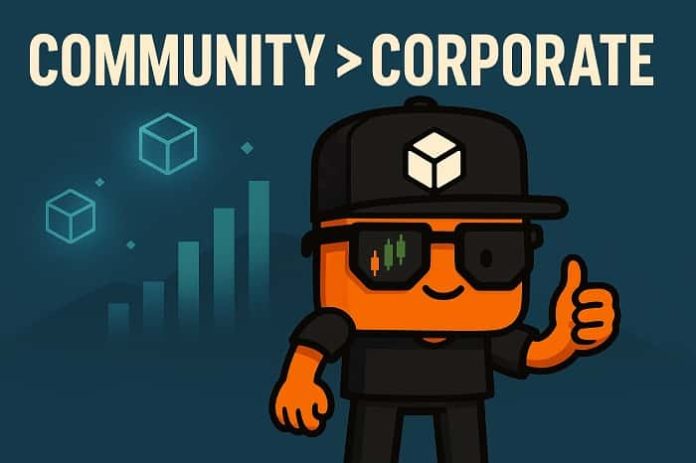
community powered The tech world is undergoing a fundamental shift, and the phrase has become its rallying cry. In every sector, from gaming to decentralized infrastructure, we are witnessing the rise of systems that rely on collaboration, transparency, and shared ownership rather than corporate hierarchies. The result is clear: models consistently outperform traditional corporate-built systems.
The Essence of Community Powered Systems
At its core, the approach is about people. Instead of top-down control, communities collectively shape decisions, governance, and innovation. This bottom-up model ensures that projects align with real-world needs and remain adaptable.
Corporations often prioritize profit above all else, leading to rigid decision-making and slower innovation. By contrast, community powered initiatives give contributors a direct stake in the outcome, fueling creativity, commitment, and long-term growth.
Gaming: A Proof of Community Powered Success
Gaming has become one of the clearest demonstrations of how ecosystems thrive. Player-driven content, open-source development, and collaborative modding communities have all reshaped the industry.
Games like Minecraft and Roblox are sustained by communities, not corporations. Their massive success comes directly from contributions — new mods, maps, and user-generated features that expand the experience far beyond what studios alone could deliver.
DePIN and the Rise of Community Powered Infrastructure
Decentralized Physical Infrastructure Networks (DePIN) are another area where models are breaking barriers. These networks rely on collective resources and participation to build systems such as wireless coverage, storage solutions, and energy grids.
Instead of waiting for corporations to invest billions, communities create infrastructure themselves. The model makes access broader, cheaper, and more resilient. By democratizing ownership, these systems give power back to individuals while delivering efficiency at scale.
Scientific Validation for Models
Skeptics often claim that communities lack rigor. Yet the microscope report validating physics-based economics proves otherwise. This independent analysis confirms that approaches are not only effective but scientifically grounded.
Such validation attracts investors. Smart money increasingly follows projects with third-party confirmation, recognizing that community powered ecosystems provide sustainable growth and real-world utility.
Why Community Powered Beats Corporate-Built
The reasons for the dominance of models are numerous. They move faster, respond better to user needs, and create stronger bonds between contributors and outcomes. Corporate systems, weighed down by bureaucracy, can rarely compete.
Transparency also plays a vital role. In ecosystems, participants can see exactly how decisions are made and resources allocated. This openness builds trust and keeps projects on course.
Historical Wins of Community Powered Movements
The history of technology is filled with examples of triumphs. Open-source software like Linux changed computing forever. Ethereum and Bitcoin are products of communities, not corporations, and they reshaped finance.
These successes highlight a simple truth: systems are capable of creating global-scale solutions that corporate structures could never achieve alone.
Investor Interest in Community Powered Projects
Investors are paying close attention. The momentum behind community powered initiatives is drawing significant capital. These projects often demonstrate faster adoption and deeper loyalty than corporate alternatives, making them attractive long-term investments.
For venture capital firms and smart money players, the phrase “community powered” signals resilience and innovation. It shows that the model is here to stay and capable of outperforming traditional approaches.
Challenges in Community Powered Growth
No system is perfect, and models face challenges such as governance disputes, coordination complexity, and balancing diverse perspectives. But these challenges are being addressed with new tools like DAOs, which provide transparent and fair frameworks for decision-making.
By tackling these hurdles head-on, community powered ecosystems prove they can combine flexibility with structure — the best of both worlds.
The Future of Gaming and DePIN with Community Powered Models
As technology evolves, gaming and DePIN are positioned to lead the community powered revolution. Gamers are already accustomed to collaborative creation, while decentralized infrastructure relies on collective resources. Together, they showcase how ecosystems will define the next era of digital and physical networks.
Conclusion: Wins Every Time
The verdict is clear. From gaming to DePIN, systems consistently beat corporate-built models. They are faster, fairer, and more innovative, with validation from independent experts and growing support from investors.
As momentum builds, the phrase “community powered” will define the next wave of global transformation. Communities create, validate, and sustain projects better than corporations ever could — every time.
